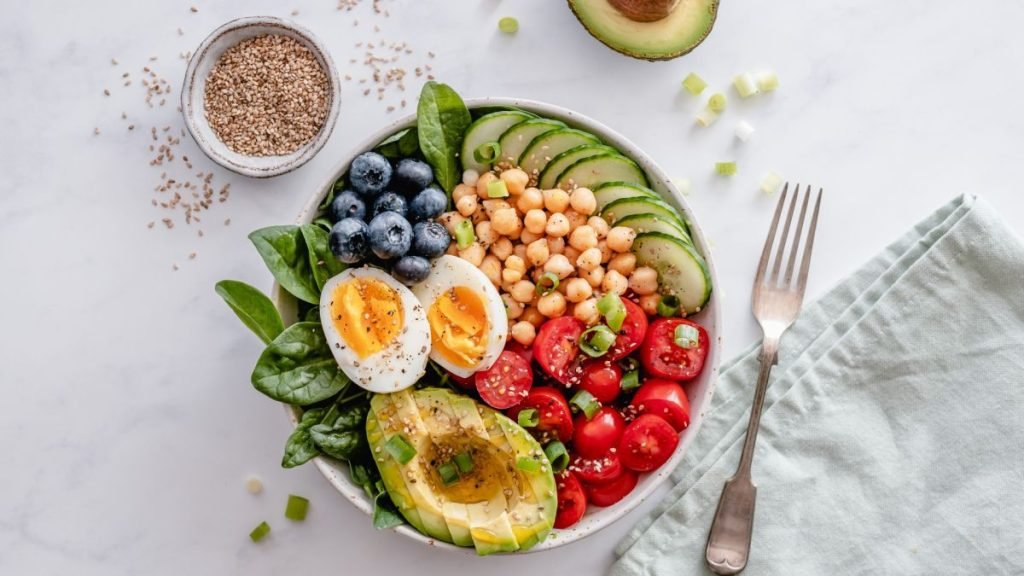
Achieving and maintaining a healthy weight is a goal that many individuals strive for in their quest for a fitter and happier lifestyle. Weight loss, however, can often feel like an overwhelming challenge, filled with conflicting advice and unrealistic expectations. To navigate this journey successfully, it is important to adopt effective and sustainable strategies that prioritize your overall well-being.
When it comes to weight loss, there is no one-size-fits-all solution. It requires a combination of healthy eating, regular physical activity, and positive lifestyle choices. Building a strong foundation starts with setting realistic goals and cultivating a mindset focused on long-term health rather than quick fixes.
In this article, we will explore a variety of effective weight loss tips that have proven to be successful for many individuals. From mindful eating and portion control to incorporating exercise routines and managing stress, we will delve into practical advice that can help you on your path to a fitter you. Remember, the key is to embrace a holistic approach that promotes sustainable habits and encourages self-care, ultimately leading to a healthier and more fulfilling life.
Best Weight Loss Tips
Weight loss strategies and approaches vary based on individual needs and goals. Here are some general tips that can be helpful for weight loss:
- Establish Realistic Goals: Set achievable and specific weight loss goals to stay motivated and focused on your progress.
- Focus on Whole Foods: Emphasize whole, unprocessed foods in your diet, such as fruits, vegetables, lean proteins, whole grains, and healthy fats.
- Practice Mindful Eating: Pay attention to your body’s hunger and fullness cues, eat slowly, and avoid distractions while eating.
- Control Portion Sizes: Be mindful of portion sizes to prevent overeating and manage calorie intake.
- Stay Hydrated: Drink an adequate amount of water throughout the day to help with hydration, digestion, and preventing thirst-induced snacking.
- Incorporate Regular Exercise: Engage in physical activities you enjoy and aim for a combination of cardiovascular exercises and strength training.
- Get Enough Sleep: Prioritize quality sleep to support healthy metabolism and regulate hunger hormones.
- Manage Stress: Find healthy ways to manage stress, such as meditation, exercise, or hobbies, to avoid stress-induced overeating.
- Seek Support: Surround yourself with a supportive network, whether it’s friends, family, or a weight loss group, to stay motivated and accountable.
- Customize Your Approach: Consider your individual preferences, lifestyle, and any dietary restrictions when choosing a weight loss approach that suits you.
Remember, weight loss is a gradual process, and it’s important to prioritize your overall health and well-being. Consult with a healthcare professional or registered dietitian for personalized advice and guidance tailored to your specific needs and goals.
Weight Loss Foods

While there is no one “magic” food that guarantees weight loss, incorporating certain foods into your diet can support your weight loss efforts. Here are some nutrient-dense foods that are generally considered beneficial for weight loss:
- Leafy Greens: Foods like spinach, kale, Swiss chard, and lettuce are low in calories and high in fiber, which can help you feel fuller for longer.
- Lean Proteins: Protein-rich foods such as chicken breast, turkey, fish, tofu, lentils, and Greek yogurt can boost satiety, preserve muscle mass, and aid in weight loss.
- Whole Grains: Opt for whole grains like quinoa, brown rice, oats, and whole wheat bread over refined grains. They provide more fiber and nutrients, promoting feelings of fullness.
- Fruits: Berries, apples, citrus fruits, and other low-sugar fruits are packed with vitamins, minerals, and fiber, making them satisfying and nutritious choices for weight loss.
- Legumes: Beans, lentils, chickpeas, and other legumes are high in fiber and protein, making them filling and helping to control hunger.
- Nuts and Seeds: Almonds, walnuts, chia seeds, and flaxseeds are rich in healthy fats, fiber, and protein, which can promote satiety when consumed in moderation.
- Low-Fat Dairy or Dairy Alternatives: Choose low-fat yogurt, cottage cheese, or unsweetened dairy alternatives like almond milk or soy milk for calcium and protein without excessive calories.
- Healthy Fats: Include sources of healthy fats like avocados, olive oil, nuts, and seeds in your diet in moderate amounts. These fats can help you feel satisfied and absorb essential nutrients.
- Spices and Herbs: Incorporating spices like ginger, cinnamon, turmeric, and herbs like parsley or basil can enhance the flavor of your meals without adding extra calories.
- Water: While not a food, staying hydrated is crucial for weight loss. Drinking water can help control appetite, support digestion, and replace high-calorie sugary beverages.
Remember, individual dietary preferences, allergies, and calorie requirements may vary. It’s important to consult a healthcare professional or registered dietitian to personalize your weight loss plan and ensure it aligns with your specific needs.
Best Exercises to Lose Weight

When it comes to losing weight, a combination of cardiovascular exercises, strength training, and high-intensity interval training (HIIT) can be effective. Here are some exercises that can aid in weight loss:
- Walking or Running: Walking or running is a simple and accessible exercise that can be done anywhere. It helps burn calories, improves cardiovascular health, and can be adjusted to various intensity levels.
- Cycling: Whether outdoor cycling or using a stationary bike, cycling is a low-impact exercise that can burn a significant amount of calories while engaging the leg muscles.
- HIIT Workouts: High-intensity interval training involves alternating between short bursts of intense exercise and brief recovery periods. This type of workout can boost metabolism, burn calories, and improve cardiovascular fitness. Examples include jumping jacks, burpees, mountain climbers, and high knees.
- Strength Training: Incorporating strength training exercises, such as weightlifting or bodyweight exercises, helps build lean muscle mass. Muscles burn more calories even at rest, aiding in weight loss. Include exercises like squats, lunges, push-ups, and dumbbell workouts.
- Circuit Training: Circuit training involves performing a series of exercises targeting different muscle groups with minimal rest in between. It helps improve strength, cardiovascular fitness, and calorie burn. Combine exercises like jumping jacks, push-ups, lunges, planks, and jumping rope.
- Swimming: Swimming is a full-body workout that is gentle on the joints. It can help burn calories, improve cardiovascular health, and increase muscle strength and endurance.
- Dance or Aerobic Classes: Joining dance or aerobic classes like Zumba, kickboxing, or aerobics can make your workouts fun and engaging while burning calories and improving cardiovascular fitness.
- Rowing: Rowing is a great total-body exercise that targets multiple muscle groups and increases heart rate. It can be done on a rowing machine or by participating in rowing classes.
- Jumping Rope: Jumping rope is a simple and effective exercise that can be done anywhere. It helps burn calories, improves coordination, and engages multiple muscle groups.
- Group Sports or Activities: Participating in team sports like soccer, basketball, or tennis, or engaging in activities like hiking, swimming, or group fitness classes can make exercise enjoyable and help with weight loss.
Remember to consult with a healthcare professional or a certified fitness trainer before starting any exercise program, especially if you have any underlying health conditions or concerns. They can provide guidance and tailor exercises to your specific needs and abilities.
Conclusion
In conclusion, achieving weight loss involves adopting a holistic approach that combines healthy eating, regular physical activity, and positive lifestyle habits. There is no one-size-fits-all solution, as the best strategies may vary depending on individual needs and preferences. However, incorporating a balanced diet consisting of whole foods, controlling portion sizes, and staying hydrated can support weight loss efforts.
Engaging in regular exercise, including cardiovascular activities, strength training, and high-intensity interval training, can help burn calories, improve cardiovascular health, and build lean muscle mass. Additionally, practicing mindful eating, getting sufficient sleep, managing stress, and seeking support from a supportive network can contribute to long-term success.
Remember that weight loss is a gradual process, and sustainable habits are key to maintaining a healthy weight. It is important to consult with healthcare professionals, such as doctors or registered dietitians, to receive personalized advice based on individual circumstances.
Ultimately, the journey to weight loss is not just about achieving a certain number on the scale but also about improving overall well-being and adopting a healthier lifestyle. By focusing on sustainable changes and embracing a positive mindset, you can achieve your weight loss goals and enjoy a fitter and healthier life.
